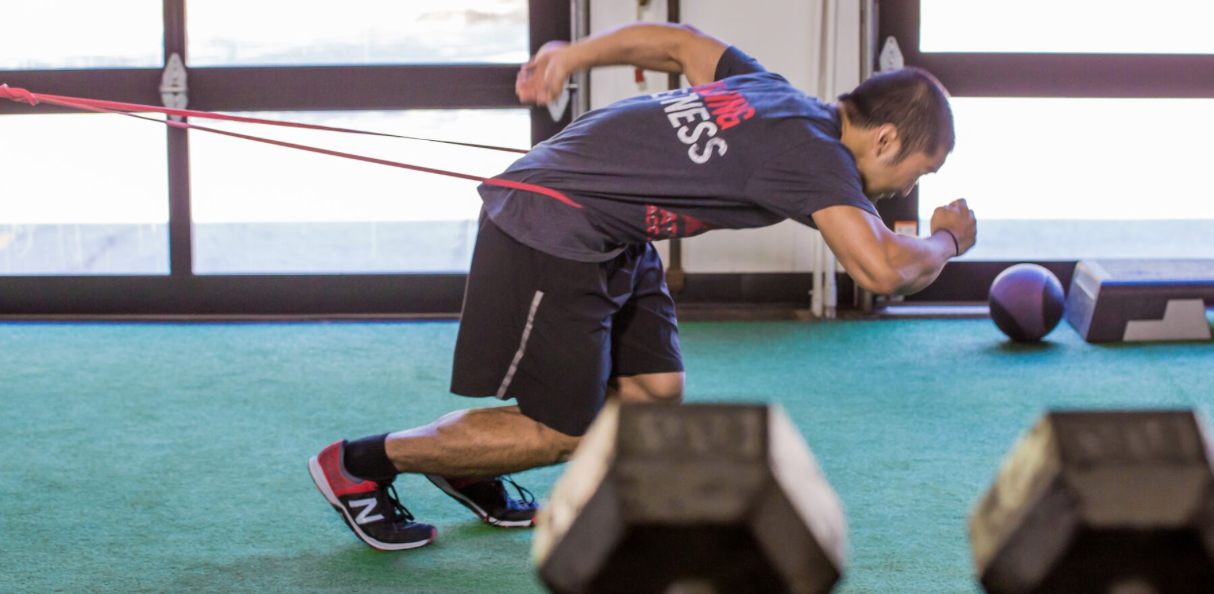Speed Training Steps
By: Brad Lokey

There are probably a thousand ways to train an athlete and in the end get the same result. However there are some fundamentals that just can not be ignored. When we are dealing with speed training it seems there are only two ways of trying to get that result that are really looked at; stride length achieved through overload, resistance and plyometric training and stride frequency achieved through overspeed training. If I had to choose only one it would obviously be the first of the two, stride length, there are more tools available for training. Also it is extremely difficult to change an athlete’s stride frequency.
There is a more important variable that we can look at however prior to attempting to change either or both (stride length or frequency), the lost variable: form and technique. There are so many athlete’s that really don’t know how to run and some of them are fast without technique amazingly enough. So let’s discuss some small changes that we can make in an athlete’s technique that have proven results. Prior to starting a form and technique training program be aware the athlete may get slower prior to getting faster, remember we are attempting to correct years of bad habits and biomechanics.
The first segment of technique we want to look at is the START & STANCE. Thorough my experience I have developed a fairly easy and very successful method I call a 10” stance. It is not literally 10”. Basically if the athlete is in a totally down position the rear knee will line up approximately with the front toe. When standing the rear toe is in line with the front heal approximately 10”. This stance creates a spring in the hips when the hips are loaded with the athlete’s body weight.
Once an athlete can achieve this stance and hold it with a lean right to the point of feeling like they are going to fall out of it we can move to the next step.
One of the most important things you can teach an athlete in running is to use their arms. So the first thing to teach them in the stance is to throw the back arm (LT or RT based on whether the athlete’s stance) before any other movement. We throw the arm out and the body falls everything else biomechanically follows it has to or the athlete literally will fall. This is probably the most difficult aspect to teach, bad habits are really hard to rid in this position.
The next thing that we need to look at is arm action. The elbow angle should be approximately 90-110 degrees. Once the elbow angle is set, it should not move or change; if it does it should be minimal. The arm action or swing occurs from the shoulder and forces the lower body to compliment the movement. The faster the arm action the faster the athlete can move the legs in sequence.
Normal form is a little tighter than 90 degrees; this is due to the practice of “lips to hips” philosophy that is standard in most speed training programs. “Lips to hips” is also represented in the picture. “Lips to hips” is just the phrase given to the path that the hands should take during arm action. Arm action gives us the ability to create more forward or linear momentum. If the arm action is linear, the momentum will be as well. If it is lateral or side to side, the momentum will be as well. Remember we want to go forward!
Here are a few tips to think about during speed training that will help with the implementation of your programs. Fine Tuning: Drills to be worked on during season preparation, 8 weeks out.
Wind Sprints Starts & Stances
Note 1: gradual acceleration and deceleration Note 1: 10” or 1 step between feet in down stance Note 2: high knee strides Note 2: (On Mark) Upper arms lose and relax, Note 3: foreleg extension head down and relax Note 3: (Get Set) Forward 1st then up, knees low, Note 4: stay off heels during drills Note 5: arm action foreleg 45 degrees, hips slightly higher Note 6: ankle bounce-lock knees than shoulders, back flat Note 6: run out not up
The final thing that I want to mention is that it can be extremely frustrating to the athlete learning some of these techniques. Be patient and understand the changes that are occurring. It is also hard to put all the techniques together; it is a progression and will take practice and a lot of repetition. However the end result is faster athletes. Keep it simple and consistent. “Perfect practice makes perfect”. Remember to hydrate especially in the summer. Good luck with your training regiments.
Brad Lokey CSCS, NSCA-CPT

—————————————————————————–




0 Comments for “Speed Training Steps”